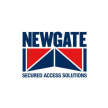Securing your business premises 101
If you’re going back to location-based work, you’ll want the experience to be a good one.
-5.jpg?fit=max&fm=jpg&ixid=MnwzNTY3MHwwfDF8YWxsfHx8fHx8fHx8MTY0ODcyNTE3OA&ixlib=rb-1.2.1&q=75&w=720&utm_medium=referral&utm_source=vocal.media)
If you’re going back to location-based work, you’ll want the experience to be a good one, not just for your but also for your employees and your customers. In fact, you have a duty of care towards both your employees and your customers. Making sure that your premises are secure is a fundamental part of this.
To discuss further, Lucinda Thorpe, Business Development Executive at Newgate, shares her tips on how to secure your business premises.
Reassess your risks
Saying that a lot has changed over the past year or so is putting it mildly. You need to do a proper security audit of the current risks. When you do so, think about the environment in general. See if there have been any changes that could impact your business’ security.
For example, if the units around you have gone from bustling to empty, then you will not be able to rely on neighbourly vigilance for protection. Even if all that’s happened is that the type of business has changed, you may find it has implications for security. For example, if a shop becomes a club or pub, you could have issues with rowdy drinkers.
Check your perimeter
The easiest way to avoid trouble on your premises is to stop it from getting into them in the first place.
Ideally, you’ll have a wall or fence around your property. This will channel traffic (pedestrian or vehicular) to designated entry points. It’s preferable if your entry points can be controlled either locally or remotely. There are options for all situations from electric gates to swing-arm barriers to moveable bollards to turnstiles.
Of course, this isn’t going to be possible for all businesses. For example, businesses in cities will be lucky if they have a patch of outdoor space to call their own. They may be able to rope it off to delineate it, but this won’t deter anyone.
All businesses can, however, make sure that the approach to their premises is clean and tidy. This limits the cover for intruders. If you can, you might want to consider some strategic landscaping. For example, gravel and prickly plants can both make life harder for people trying to approach your premises undetected.
Use CCTV strategically
At the risk of stating the obvious, the purpose of CCTV is to capture images of people. Those images are classed as personally identifiable data and hence they are covered by GDPR. This means that you cannot just cover the approach to your premises with CCTV cameras. In fact, you can’t just fill the inside of your building with CCTV cameras.
Instead, you need to make sure that cameras are focused (literally and figuratively) on key areas such as doors and windows. You also need to ensure that they are clearly signed so that people have the opportunity to avoid them if they wish. Last but not least, you need a policy regarding the retention, and hence deletion, of data.
With all that said, CCTV cameras are still great security tools, provided that you use them properly. There are three key parts to making that happen. Firstly, you need to ensure that they have sufficient light, including, and especially at night. Secondly, you need to ensure that they are kept free from obstructions (e.g. branches).
Thirdly, you need to ensure that they are properly maintained. It’s even better if you can have them monitored remotely by a security company. If your budget is tight, then you might just have the cameras monitored out of business hours.
Invest in a monitored alarm system
Having 24/7 on-site security is unlikely to be a practical option for the average small business. A combination of monitored CCTV and monitored alarms can, however, be an excellent substitute at a much more affordable price.
Monitored alarms are more expensive than audio-only alarms but they are also massively more effective. You’ve probably noticed yourself that people will often ignore the sound of alarms going off. Criminals know it too. There’s nothing to stop you from using an audio alarm as well. It may inconvenience them, but that’s probably all it will do.
Secure your doors and windows
Securing your doors and windows means different things at different times. When the building is unoccupied, it means securing them from being physically broken. Metal security doors and shutters are generally the way to go here. At the very least secure everything on the ground floor. You may want to think about securing higher floors as well.
All external doors and windows need locks regardless of what floor they’re on. If you’re insured (which is highly recommended), your insurer may specify a minimum standard of lock to be used. Remember that this is a minimum standard, not a target. You should generally invest in the best locks you can afford.
Guard your privacy
Think about what other people can see through your windows. Remember to account for modern technology such as super-strength binoculars or even drones. Net curtains can let in light (to keep staff happy) while still shielding your interiors from view. Alternatively, you can use privacy film and/or privacy glass.
If you must keep valuables on-site, then try to keep them in secure storage when they’re not being used. This includes in the daytime and especially at night. Try to keep the secure storage hidden. For example, put a safe behind a piece of art. Mark valuable in some way whenever possible. For example, use a UV pen.
Think about access controls
If you run a very small business, then you might be fine with just old-school keys. You will, however, need to be sure to keep an up-to-date record of where they are. If there is ever a time when you don’t know where all your keys are, you either need to find them promptly or have the locks changed immediately.
Keys are increasingly becoming more hassle than they’re worth for businesses. The next step up is PIN-entry controls. These do come with the risk of PINs being shared. You can, however, mitigate against this by changing PINs frequently and installing CCTV at the entry point(s).
The last major option is access-card controls. These are arguably the best option since they can be issued to each employee individually but controlled centrally. They can also be customized. For example, you could allow any given employee access to certain areas of your premises but not others.
About the Creator
Lucinda Thorpe
Lucinda Thorpe is the Business Development Executive at Newgate Newark Ltd and is responsible for monitoring market strategies and implementing changes to enhance the companies profile and exposure.






Comments
There are no comments for this story
Be the first to respond and start the conversation.